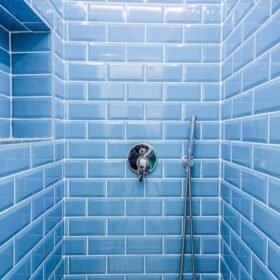Kitchen knobs are vastly associated with functionality, but aesthetics also form the key reasons why people choose them. The basic kitchen accessories deliver ease to everyday life, because, then, the contact of your hands with the kitchen cabinet surface is less and longings its life.
Choosing among the available knobs and pulls could be a tough decision and is ultimately dependent on a buyer’s preferences. But we have some tips available to help you with the selection. Characteristically, you are going to require knobs and pulls for kitchen cabinets if you are remodeling your kitchen or building a new kitchen.
Determining If You Want a Knob or Pull
There are no hard and fast rules in this regard. If you want a knob then go for Knobco, and if you want a pull then go for a pull. You could go for a combination of the two as well.
A commonplace preference is to use pulls for all doors and knobs for all drawers. Similarly, if there are any large doors in your kitchen cabinetry, such as a pantry door, then a pull will yield the best outcome for the same.
Overall, using a pull for opening a drawer is easier, because the entire hand yields force. In the case of cabinet knobs, it is only the fingertips that yield force. In case the drawer holds something heavy, such as dishes, then using drawer pulls is going to be your default choice.
Pulls are characteristically more contemporary as compared to knobs. Older kitchens often used to have knobs only, because they had limited choices in terms of cabinet hardware. But, now, one can go for pulls as well. So, using knobs yields a traditionalistic look to a kitchen.
Typically, pulls are mounted vertically for doors and horizontally for drawers.
Do you want your knobs and pulls to be straight or curved?
A range of factors helps with determining if you should be going for kitchen cabinet hardware that features straight or curved edges. This may depend on your cabinet style, lighting fixtures, countertop edges, and any other design elements. Do any of the décor elements in your kitchen have straight or curved lines? Typically, the aesthetics of kitchen hardware should be consistent with the prevailing design elements.
Knobco Kitchen cabinet hardware examples of square cabinet styles are shaker and flat panel doors, all modifications included. In some cases, square cabinet styles are rounded or contoured towards the corners. Herein, straight or curvy kitchen hardware should both work well.
Similarly, for curved cabinet styles, the most common examples are traditional raised panel doors, recessed panel doors with ogee edges, and pillow-top doors. Curved hardware should work just fine for these alternatives, and is characterised by additional detailing.
Considering the finish
In most cases, homeowners choose to go for brushed nickel or chrome finish. But, a range of other finishes is typically going to be available for a buyer’s discretion. While it matches most of the design elements in the kitchen, any finish should work just fine.
With chrome faucets, white, dark bronze, black, clear glass, and pewter kitchen hardware matches well. But, if you use brushed stainless steel or brushed nickel faucets in the kitchen, then antique pewter, different shades of bronze, aluminium, oil-rubbed bronze, or black matter kitchen hardware should work just fine.
Comfort makes an important consideration
It is always better to go for a pull that fits all fingers and features no sharp edges. A knob should also be easy to manoeuvre. You might be using the knobs and pulls for a long time, so comfort comes first.
Styling of hardware
Kitchen cabinet hardware is broadly divided into five categories, contemporary, traditional, transitional, eclectic and rustic.
Contemporary
A contemporary kitchen is characterized by little ornamentation and sleek lines. The colour palette, herein, is likely to be neutral. Simple and streamlined hardware is going to yield the best outcomes in such cases. One may choose to go for curved barrel handles or linear bar handles.
Traditional
Traditional kitchens are associated with embellishments, elaborate detailing, and molding. One can go for a vintage look for traditional kitchens via knob selection. A pull or a knob with a porcelain overlay will work just fine. One may also go for fancy knobs that match the furniture style.
Transitional
Transitional style blends the elements of traditional and contemporary styles. Going for pulls shaped like a cup handle could be an experimental idea.
Eclectic
Painted, pretty knobs look excellent for a kitchen created in an informal style, like the one you have at your beach house.
Rustic
Rustic style kitchens have similarities with farmhouse style kitchens and promote warmth. One of the options that work the best for such a décor scheme is simple knobs or pulls with an oil-rubbed copper, bronze, or black finish.
Costing of the product
Cost, in some cases, is directly proportional to the quality of knobs and pulls. But if you like something, you can go for it.
It is best to avoid the hardware that looks subpar and does not have a good finish. Pricing is characteristically based upon design and finish. Kitchen hardware made using solid stainless steel or bronze is going to be more expensive. Similarly, if a pull is long, it is going to be more expensive because more material has been used.
Conclusion
Kitchen hardware plays a role in defining a kitchen’s aesthetics. So, one should spend some moments choosing the best-suited knobs and pulls for your kitchen. A few of the most important tips to keep in mind are colour coordination, ease of use, and design of the hardware. Spending some moments doing some research over kitchen hardware and the options available at your disposal is a fine idea.







